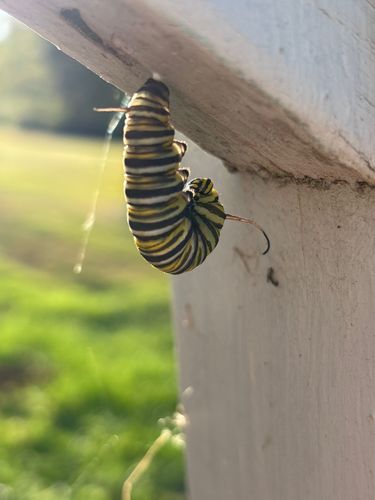Monarch Caterpillar
Scientific Name: Danaus plexippus (larval stage)
Order & Family: Order: Lepidoptera, Family: Nymphalidae
Size: Up to 5 cm (2 inches) in length when fully grown (fifth instar).

Natural Habitat
Typically found in open fields, meadows, gardens, and along roadsides where milkweed plants are abundant. They are often seen on the underside of milkweed leaves or stems.
Diet & Feeding
Monarch caterpillars exclusively feed on the leaves of milkweed plants (Asclepias species). They consume large quantities of milkweed, growing rapidly through several instars ( विकास stages).
Behavior Patterns
Before pupating, the caterpillar will find a safe, sheltered location, often hanging upside down from a silk pad it creates. It then sheds its skin one last time to reveal the chrysalis. The pupation phase typically lasts 8-15 days, after which the adult butterfly emerges. Monarch caterpillars are solitary feeders.
Risks & Benefits
Benefits: Monarch caterpillars are crucial for the lifecycle of the Monarch butterfly, a significant pollinator. They serve as a food source for some predators and contribute to biodiversity. Risks: For humans, there are no direct risks. The caterpillars accumulate cardiac glycosides from milkweed, making them toxic to many predators, which is a defense mechanism for the caterpillar and subsequent butterfly.
Identified on: 9/3/2025